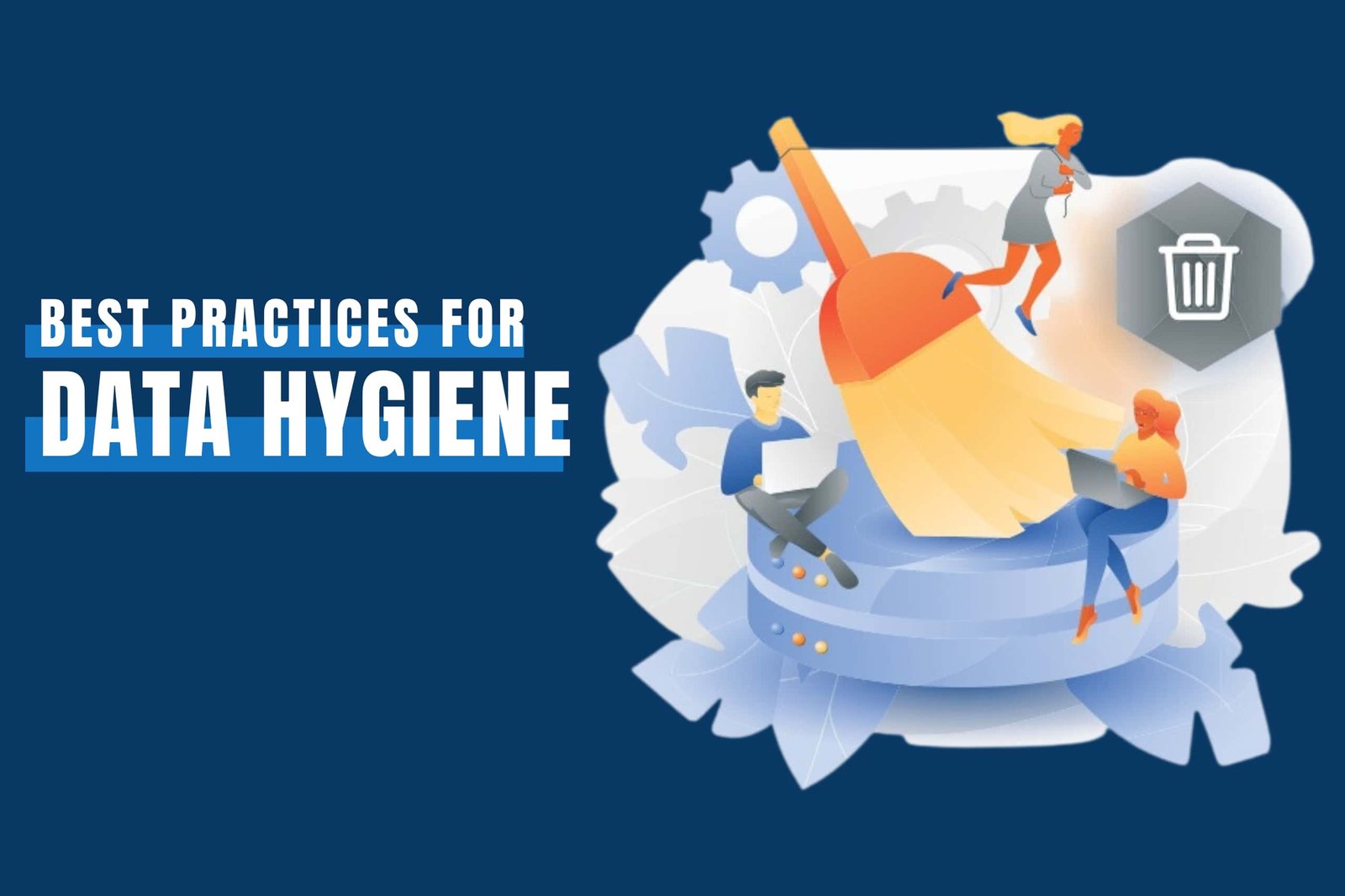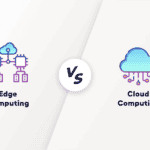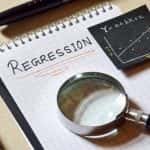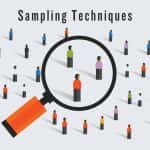In today’s world, data runs the show. Every business, irrespective of the niche of operations is harnessing the power of data and make their strategies result-oriented. As compared to the earlier times, businesses are inundated with vast amounts of information. To harness this information in the best interest of the business, it is imperative to filter quality inputs. Here comes the role of techniques of Data Hygiene.
Without proper maintenance and management, data can quickly become overwhelming and even detrimental to an organization’s success. This is where data hygiene comes into play. In this article, we will delve into the concept of data hygiene, its best practices, and key features, while also exploring the benefits it offers to businesses.
Understanding Data Hygiene
Data Hygiene Explained
Data hygiene, also known as data cleansing or data scrubbing, refers to the process of identifying and rectifying errors, inaccuracies, and inconsistencies in a dataset. It involves validating, cleaning, and enriching data to ensure its accuracy, completeness, and relevance.
Why is Data Hygiene Important?
Data hygiene is vital for any organization that relies on data to make informed decisions. By maintaining clean and reliable data, businesses can avoid costly mistakes, enhance operational efficiency, and gain a competitive edge in their respective industries.
Best Data Hygiene Tools & Software
Trifacta Wrangler
Pros:
User-friendly interface with drag-and-drop functionality.
Powerful data profiling and data preparation capabilities.
Supports a wide range of data sources and formats.
Provides real-time data monitoring and alerts.
Offers collaboration features for teams.
Cons:
The free version has limited features.
May require some learning curve for complex transformations.
OpenRefine (formerly Google Refine)
Pros:
Open-source and free to use.
Handles large datasets efficiently.
Provides advanced data cleaning and transformation options.
Allows the use of custom scripts for data processing.
Works well with messy and inconsistent data.
Cons:
Requires some technical knowledge to utilize advanced features.
Limited integration with other data tools.
Talend Data Preparation
Pros:
Offers both cloud-based and on-premises deployment options.
Intuitive interface for data cleansing and enrichment.
Integrates well with other components of the Talend ecosystem.
Supports data governance and data lineage tracking.
Provides scheduling and automation features.
Cons:
Some advanced features are only available in the paid version.
Large datasets may require significant processing time.
Informatica Data Quality
Pros:
Robust data profiling and standardization capabilities.
Comprehensive data cleansing and enrichment options.
Scalable for handling enterprise-level data.
Integration with Informatica’s broader suite of data management tools.
Offers data quality monitoring and reporting.
Cons:
Expensive, making it more suitable for larger organizations.
Requires specialized training to use effectively.
Microsoft Data Quality Services (DQS)
Pros:
Part of the Microsoft SQL Server ecosystem.
Seamless integration with SQL Server databases.
Provides both batch and real-time data cleansing options.
Offers data matching and deduplication features.
Supports data quality knowledge bases.
Cons:
Limited support for non-Microsoft data sources.
May not be as feature-rich as standalone data quality tools.
Remember that the best Data Hygiene tool for a particular organization depends on their specific needs, budget, and existing technology stack. It’s essential to evaluate each tool’s features, scalability, and ease of use before making a decision.
Data hygiene in Adobe Experience Platform
In Adobe Experience Platform, data hygiene refers to the process of maintaining clean, accurate, and relevant data to ensure optimal data quality and integrity. It involves various practices and tools aimed at identifying and rectifying errors, inconsistencies, and redundancies in the data.
Data hygiene in Adobe Experience Platform includes:
1. Data Cleaning and Validation
Regularly cleaning and validating data to identify and fix any inaccuracies or discrepancies. This process ensures that the data remains accurate and reliable for use in various marketing and customer experience initiatives.
2. Data Deduplication
Identifying and removing duplicate records from the dataset to prevent redundancies and ensure a single, unified view of the customer.
3. Data Standardization
Converting data into a consistent format to maintain uniformity and compatibility across different systems and channels.
4. Data Enrichment
Enhancing the data by adding relevant information from external sources, which provides more insights and context for better customer understanding.
5. Real-time Data Monitoring
Monitoring data in real-time to promptly identify and address any data quality issues as they arise, ensuring continuous data accuracy.
By practicing data hygiene in Adobe Experience Platform, businesses can gain a holistic and accurate view of their customers, leading to improved personalization, enhanced customer experiences, and more informed decision-making across all marketing efforts.
Key Features of Data Hygiene Tools
- Automated Data Cleansing
Data hygiene tools often employ automated processes to identify and correct errors swiftly. This feature saves time and resources, allowing businesses to focus on other critical tasks.
- Data Profiling and Analysis
Data profiling and analysis capabilities enable organizations to gain valuable insights into their datasets. This, in turn, helps identify data issues and make more informed decisions.
- Data Enrichment
Data hygiene tools can enrich datasets by adding missing information from reputable external sources. This feature enhances the overall quality and completeness of the data.
Data Hygiene Processes & Best Practices
Data hygiene, also known as data cleansing or data scrubbing, is a crucial aspect of maintaining data accuracy, reliability, and relevance. By adhering to best practices for data hygiene, businesses can ensure that their datasets remain consistent and free from errors, enabling better decision-making and improved overall efficiency. Here are some essential data hygiene best practices:
-
Regular Data Cleaning and Validation
Conduct regular data cleaning and validation to identify and rectify errors, such as missing, duplicate, or outdated entries. This practice ensures that data remains accurate and up-to-date.
-
Data Deduplication
Implement data deduplication processes to identify and eliminate duplicate records from the dataset. This practice helps prevent data redundancies and minimizes storage costs.
-
Standardization of Data
Standardize data formats and values across the dataset. By doing so, businesses can maintain consistency and ensure that data remains compatible across different systems and applications.
-
Data Privacy and Security Measures
Implement robust data privacy and security measures to protect sensitive information from unauthorized access or breaches. Safeguarding data is crucial for maintaining customer trust and complying with data protection regulations.
-
Data Governance
Establish proper data governance practices to ensure that data is managed, utilized, and stored in compliance with industry regulations and internal policies. This helps maintain data integrity and enhances data quality.
-
Automated Data Cleansing
Utilize automated data cleansing tools and processes to identify and rectify errors efficiently. Automation saves time and resources while maintaining data accuracy.
-
Data Profiling and Analysis
Use data profiling and analysis techniques to gain insights into the dataset’s quality and structure. This helps identify data issues and areas that require improvement.
-
Data Enrichment
Enrich datasets with additional information from reputable external sources. Data enrichment enhances data completeness and improves the overall quality of the dataset.
-
Real-time Data Monitoring
Implement real-time data monitoring to promptly address any data quality issues as they arise. Proactive monitoring helps prevent data degradation and ensures data accuracy.
-
Employee Training and Awareness
Educate employees about the importance of data hygiene and provide training on data handling best practices. Employees should be aware of their role in maintaining data quality and security.
-
Data Quality Metrics
Establish data quality metrics to measure the effectiveness of data hygiene efforts. Regularly monitor these metrics and use them to continuously improve data hygiene processes.
By following these data hygiene best practices, businesses can maintain clean, accurate, and reliable data, leading to better decision-making, improved customer satisfaction, and overall success in today’s data-driven world.
Benefits of Data Hygiene
- Enhanced Data Accuracy
Clean and accurate data leads to more reliable analyses and better decision-making, enabling businesses to stay ahead of the competition.
- Improved Decision Making
With trustworthy data at their disposal, businesses can make data-driven decisions with confidence, resulting in increased efficiency and productivity.
- Increased Customer Satisfaction
Data hygiene ensures that customer information is up-to-date and correct. This leads to improved customer service, satisfaction, and loyalty.
- Regulatory Compliance
Adhering to data hygiene best practices helps organizations comply with data protection laws and regulations, mitigating the risk of legal and financial consequences.
Data Hygiene v/s Data Quality & Data Integrity
|
Aspect |
Data Hygiene | Data Quality |
Data Integrity |
| Definition | Process of cleaning and maintaining data to ensure accuracy and reliability | Measure of data’s accuracy, completeness, relevance, and reliability | Assurance of data’s accuracy, consistency, and reliability over its entire lifecycle |
| Focus | Eliminating errors and inconsistencies in the data. | Ensuring data meets specific quality standards. | Preventing unauthorized access and alterations to the data. |
| Importance | Vital for data-driven decision-making and operational efficiency | Crucial for making informed business decisions. | Critical for ensuring trust and confidence in the data. |
| Methods | Data cleaning, validation, deduplication, and enrichment | Data profiling, data standardization, and data cleansing | Data encryption, access controls, audit trails, and version control |
| Goal | Ensure data accuracy and completeness for better use. | Improve data accuracy, reliability, and relevance | Maintain data’s accuracy, reliability, and consistency |
| Impact on Business | Reduces errors and costly mistakes, improves efficiency, and customer satisfaction | Enhanced decision-making improved customer satisfaction and business performance. | Mitigates data risks, ensures compliance with regulations, and protects data privacy |
Conclusion
Data hygiene is an indispensable practice for modern businesses seeking to harness the power of data effectively. By following best practices and utilizing advanced data hygiene tools, organizations can maintain accurate and reliable data, leading to better decision-making, improved customer satisfaction, and long-term success.
FAQs
- What is data hygiene, and why is it essential for businesses?
Data hygiene refers to the process of cleaning, validating, and enriching data to ensure its accuracy and relevance. It is crucial for businesses as it helps them make informed decisions and stay competitive in their industries.
- How does data hygiene benefit customer satisfaction?
Clean and up-to-date customer data leads to better customer service, resulting in increased satisfaction and loyalty.
- Are there any automated tools for data hygiene?
Yes, many data hygiene tools offer automated processes to identify and rectify data errors efficiently.
- What role does data governance play in data hygiene?
Data governance ensures that data is managed and used in compliance with regulations and internal policies, contributing to overall data hygiene.
- Can data hygiene help businesses comply with data protection laws?
Yes, following data hygiene best practices can aid businesses in complying with data protection laws, reducing the risk of legal and financial repercussions.











